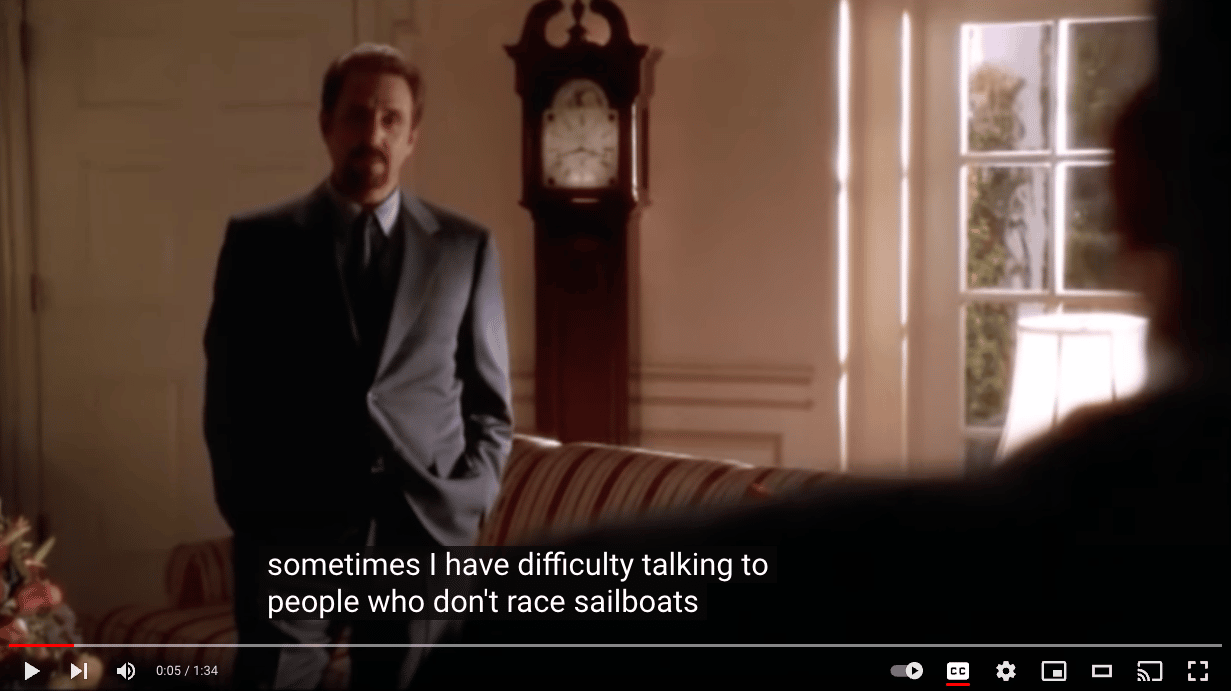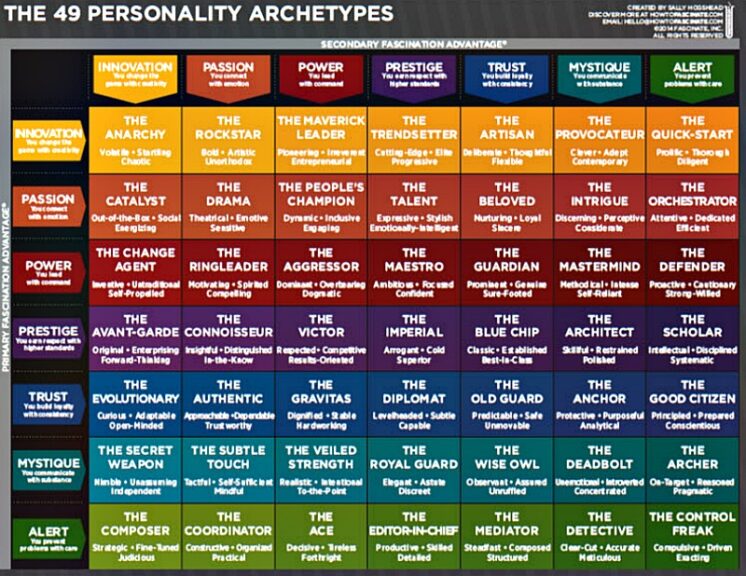Are you doing enough — for content?
“For content!” = a statement used on the internet for something that’s usually unacceptable in normal society, but is excused because it is for the purpose of a YouTube video.
Source: Urban Dictionary
Should your brand take notes from popular streamers and put more on stake to produce better content?
Here we go:
The Online Chess Boom
Lately, I’ve been fascinated by the world of chess.
The embodiment of the game used to be the idea of two all-seeing titans, with stern foreheads frowned in deep thought, waging an intellectual war against each other over the board — in silence.
Back then, imagine being given the following PR brief:
“Turn chess into a playful and fast-paced venue for youthful expression. Make it less dull and highbrow. Make it digital-first. Also, please make learning about the game a dynamic and creative grassroots movement.”
Quite the PR challenge, indeed.
Still, we know how it happened. In December 2019, the Covid-19 pandemic hit and forced many of us into quarantine for many months. And then, in October 2020, the Netflix miniseries The Queen’s Gambit aired.
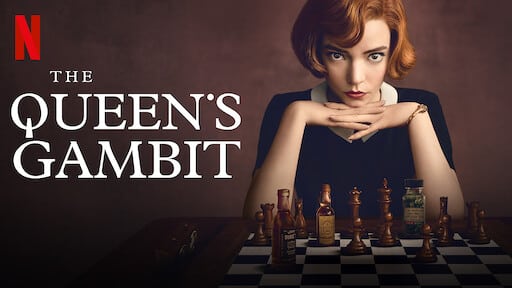
“Chess app downloads on the App Store and Google Play Store rose by 63% after the show [The Queen’s Gambit] debuted. Chess.com saw more than twice as many account registrations in November as it had in previous months, and the number of games played monthly on Lichess doubled as well. There was also a demographic shift in players, with female registration on Chess.com shifting from 22% of new players to 27% of new players.”
Source: Wikipedia
Read also: The Chess Project: 12 Months With the Most Beautiful Game
Today’s Online Chess Space
Today’s online chess space is sparkling with activity and engagement. And it’s not just about chess — the players are becoming bonafide online superstars. And with online superstardom and lively communities come drama and mainstream publicity.
The other day, I watched a YouTube video with the Botez sisters, Alexandra and Andrea. Another popular chess streamer, Anna Cramling, the daughter of grandmasters Pia Cramling and Juan Manuel Bellón López, featured them.
The three streamers had met to enjoy a couple of fast games while soaking in the sun next to a swimming pool and to create live chess content.

Stakes were added to the games to make the content more engaging. The loser had to jump into the pool with their clothes on while the two others would relay some of the excited reactions from their live chat channels.
On this day, Cramling lost — and into the pool she went.
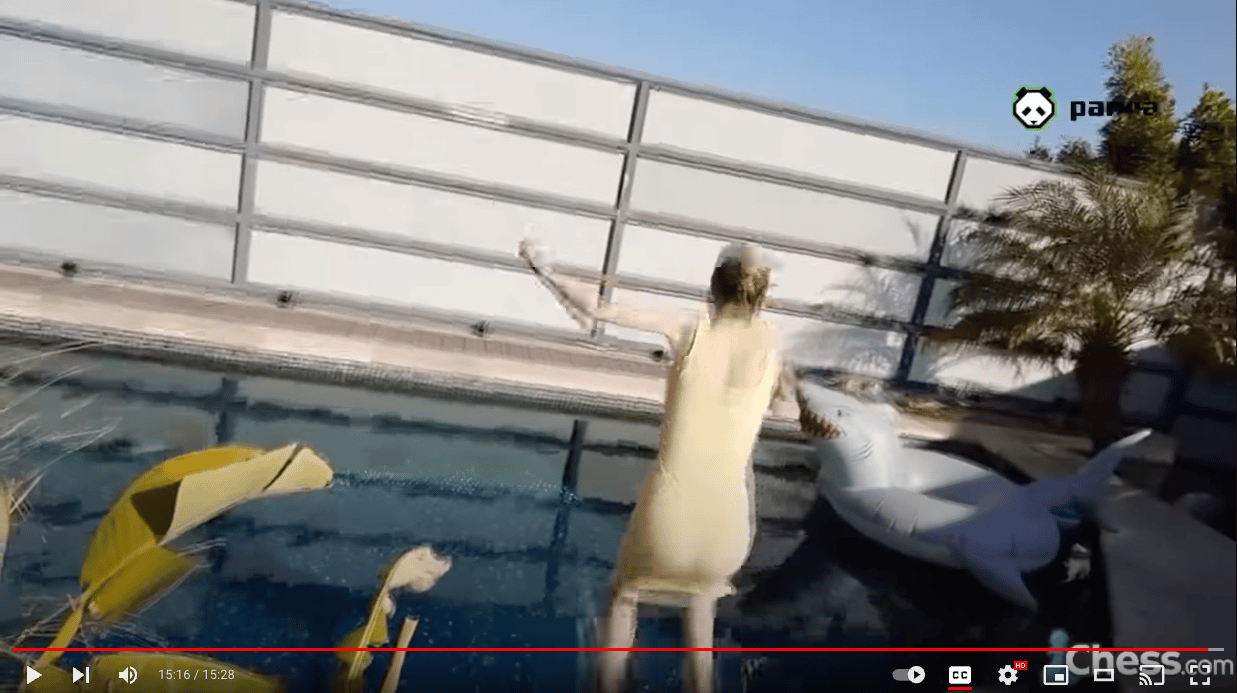
Adding Stakes To Fuel Engagement
Adding stakes to make the content more engaging is typical for the Botez sisters. A young chess player challenged Andrea Botez for her Snap (boomer clarification: that’s the equivalent of getting someone’s phone number). And I’ve seen the Botez sisters dare each other to run laps in public while flapping like a chicken.
Just your typical internet stuff, right?
Well, here’s my point: It’s not that chess is boring. But if you can make your video content more fun, interesting, and engaging, why wouldn’t you?
When it’s time for the loser to jump in the pool, share their Snap, or run laps while flapping like a chicken, you often hear the modern battle cry of the social media influencer:
“For content!”
People Who Don’t Race Sailboats
Going the extra mile is an interesting concept.
I’m considering the fantastic scene in The West Wing with US President Josiah Bartlett (Martin Sheen) and the strategic campaign adviser Bruno Gianelli (Ron Silver).
Gianelli argues that it’s difficult to coöperate with professionals who don’t race sailboats. When racing sailboats, kelp sometimes gets stuck to the hull. The kelp causes a slight drag. If you try to remove it using a stick, it will cause more drag than the kelp, so you must use a specific technique to preserve every bit of momentum.
Gianelli’s point is that he jumps at even the slightest opportunity to maintain or increase momentum.
Is Gianelli being silly?
To him, every advantage matters.
Learn more: The Extra Mile PR Strategy
Evoking Sentiment “For Content!”
As a reader of this blog, you’re probably a professional communicator. Am I telling you to spice up your next press release by jumping into a swimming pool … for content?
Well, I am saying precisely that.
The media landscape of today’s attention economy is fierce. We would be wise to take the influencer battle cry “For content!” seriously.
“People want to be loved; failing that admired; failing that feared; failing that hated and despised. They want to evoke some sort of sentiment. The soul shudders before oblivion and seeks connection at any price.”
— Hjalmar Söderberg (1869−1941), Swedish author
I’ve worked with corporate communications in various forms since 2005. It’s a factual statement that all facets of corporate content typically lack personality, style, emotional charge, character, attitude, fun, and eccentricity.
When you strip corporate content of humanity’s beautiful quirkiness, whatever you’ll be left with is … cringe-worthy. And corporate cringe is far worse than adding some odd flavour to your PR messaging.
Jump Into the Swimming Pool
You may not have to jump into a swimming pool to boost your content strategy. But, for instance, have you ever considered adding stakes to your communication? No? Huh.
Take a close look at your next piece of content scheduled for publishing. Have you gone the extra mile? Are your content creation ideas worthy of attention? Are you sure that there is no kelp stuck to your hull?
Ask yourself: What more can your brand do — for content?

THANKS FOR READING.
Need PR help? Hire me here.

PR Resource: Free Content PR Course
Spin Academy | Online PR Courses

Spin’s PR School: Free Content PR Course
Unlock your potential with this Free Content PR Course. Learn effective digital public relations strategies and elevate your career to new heights today.
Content Communications
Content Management
Content Strategies
Learn more: All Free PR Courses
💡 Subscribe and get a free ebook on how to get better PR.

PR Resource: The Anatomy of Attention
The Anatomy of Attention
Attention is an essential component of public relations:
An organisation, starved of attention, trust, and loyalty, is compelled to wage a perpetual struggle for its continued existence.
And it’s not just organisations. We all seem to crave attention in some form or another:
“People want to be loved; failing that admired; failing that feared; failing that hated and despised. They want to evoke some sort of sentiment. The soul shudders before oblivion and seeks connection at any price.”
— Hjalmar Söderberg (1869−1941), Swedish author
It’s fear of social isolation—and attention starvation.
“There’s only one thing in the world worse than being talked about, and that is not being talked about.”
— Oscar Wilde
Types of Attention
But what constitutes ‘attention’?
“Attention is a complex, real neural architecture (‘RNA’) model that integrates various cognitive models and brain centers to perform tasks like visual search.”
Source: Trends in cognitive sciences 1Shipp, S. (2004). The brain circuitry of attention. Trends in Cognitive Sciences, 8, 223 – 230. https://doi.org/10.1016/j.tics.2004.03.004
Each of the below terms refers to a specific aspect or type of attention (“mental bandwidth”), a complex cognitive process. 2Schweizer, K., Moosbrugger, H., & Goldhammer, F. (2005). The structure of the relationship between attention and intelligence. Intelligence, 33(6), 589 – 611. … Continue reading
Let’s explore different types of attention:
Each type of attention is likely to play a role in how we interact with and process information from our environment, and understanding these different aspects is key in fields like psychology, neuroscience, and education.
Learn more: The Anatomy of Attention
PR Resource: Languages of Fascination
The Languages of Fascination
Author Sally Hogshead created the concept and the visual representation of the languages of fascination. Discover more at howtofascinate.com.
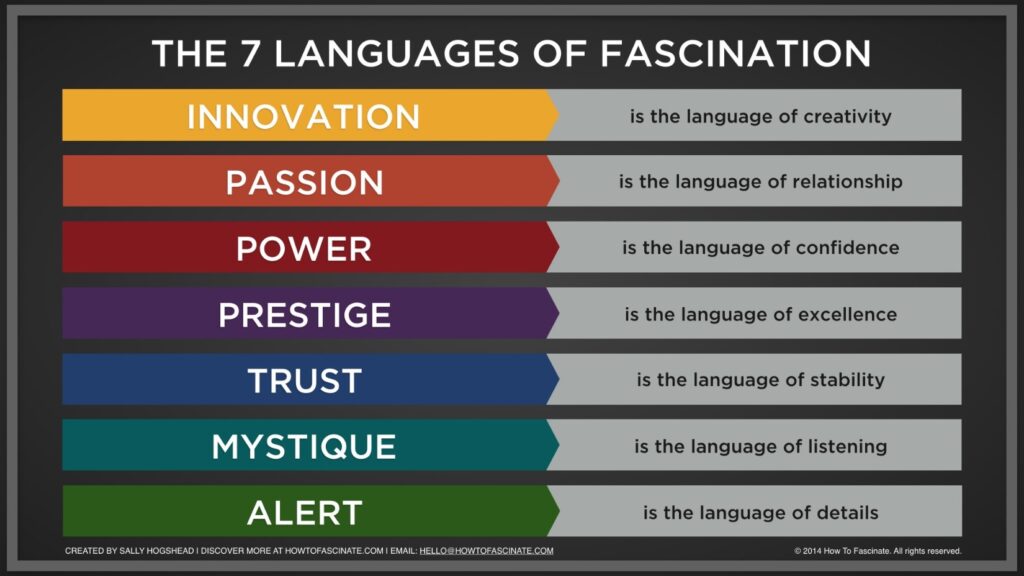
Hogshead’s model is a helpful primer for copywriting for personal brands in all types of industries.
“80% of people behave differently when they’re fascinated by a brand. They do research, talk to friends. In fact, consumers report specific physical responses to fascinating products: a faster heart rate and ‘thrill’ of excitement.“
Source: Sally Hogshead 3Hogshead, S. (2024, October 10). How to Fascinate. https://www.howtofascinate.com/
The 7 Languages of Fascination
What is the language of fascination?
Hogshead’s 49 Personality Archetypes
What type of personality archetype are you?
Learn more: Take Hogshead’s “Fascinate Assessment”
Annotations
| 1 | Shipp, S. (2004). The brain circuitry of attention. Trends in Cognitive Sciences, 8, 223 – 230. https://doi.org/10.1016/j.tics.2004.03.004 |
|---|---|
| 2 | Schweizer, K., Moosbrugger, H., & Goldhammer, F. (2005). The structure of the relationship between attention and intelligence. Intelligence, 33(6), 589 – 611. https://doi.org/10.1016/j.intell.2005.07.001 |
| 3 | Hogshead, S. (2024, October 10). How to Fascinate. https://www.howtofascinate.com/ |

